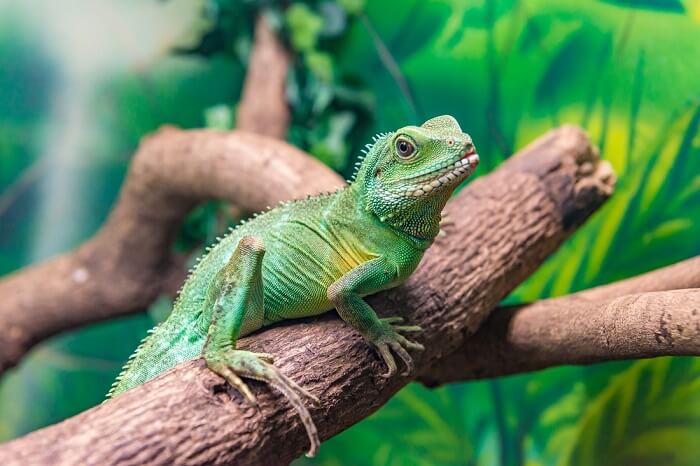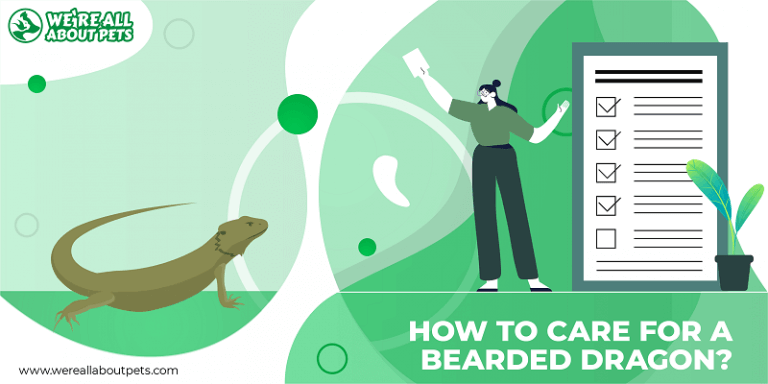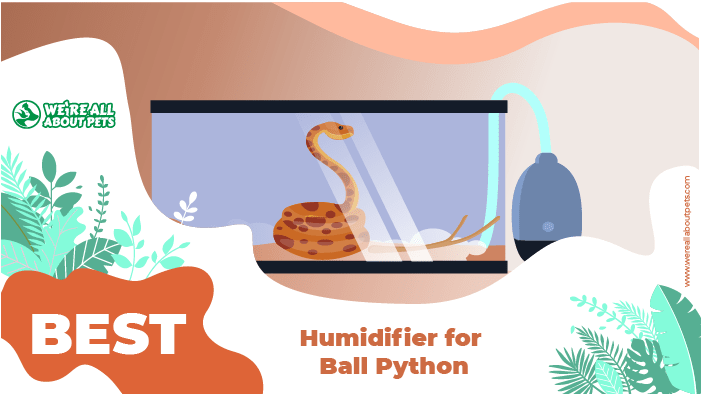How To Care For A Pacman Frog? Lifespan, Size & Setup
This page contains affiliate links. We may earn money or products from the companies mentioned in this post through our independently chosen links, which earn us a commission. Learn More
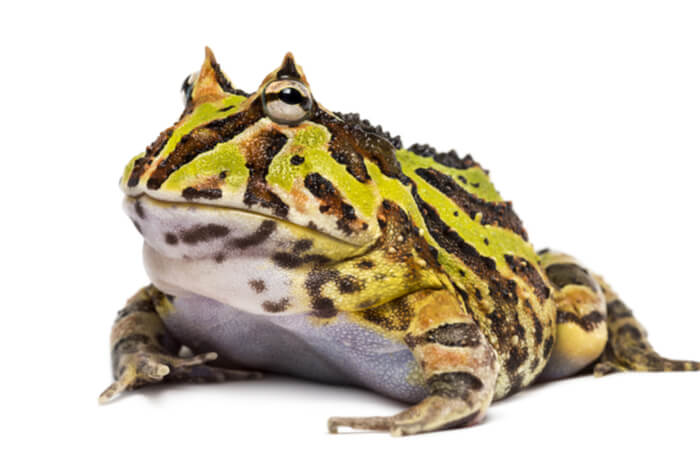
Pacman frogs (also known as horned frogs) can make good pets for the right person. In terms of care, they are easy amphibians to keep. They have great color patterns and unique “eyebrows” that make them fun to watch. This article will help you understand their special needs and decide if they’re the right pet for you.
Care
The care of an amphibian includes providing an enclosure that meets all the physical and mental needs of your pet. It needs the proper temperature, lighting, humidity, substrate, and size. Good care also involves feeding the proper diet.
Pacman Frog Lifespan
Pacman frogs can live 7 years or more in captivity if they have good care. Proper care creates conditions similar to their wild habitat, since they’re well adapted to that world.
Pacman frogs in the pet trade most often would be native to humid forests in South America. However, there are actually several different species of horned frogs living in different areas, so depending on the species, the habitat could look a bit different. These general guidelines will cover you for most of the pacman frogs in the pet trade.
It’s important to choose a captive-bred animal for your pet. Taking a horned frog from the wild is bad for the ecosystem. Additionally, it can introduce disease from the wild into other animals in your home. One of the most serious concerns is Chytridiomycosis, a fungal disease that has been devastating wild amphibian populations.
Cage Size and Setup
Adult pacman frogs are fairly large. A full grown Pacman frog males will be 4-6 inches long, and females may be up to 8 inches long. They aren’t the most active frogs, but they still need a decent sized habitat to feel comfortable. They seem less active because they hunt by waiting still and waiting for insects to go past, then ambush the prey.
Because of this behavior, many care sheets say that a 10-gallon aquarium is adequate for an adult. Despite the fact that you won’t see them move much, they will feel far more comfortable in an aquarium twice that size. They’re nocturnal frogs, and they’ll move around the enclosure at night. When they do, they’ll appreciate the size.
Substrate
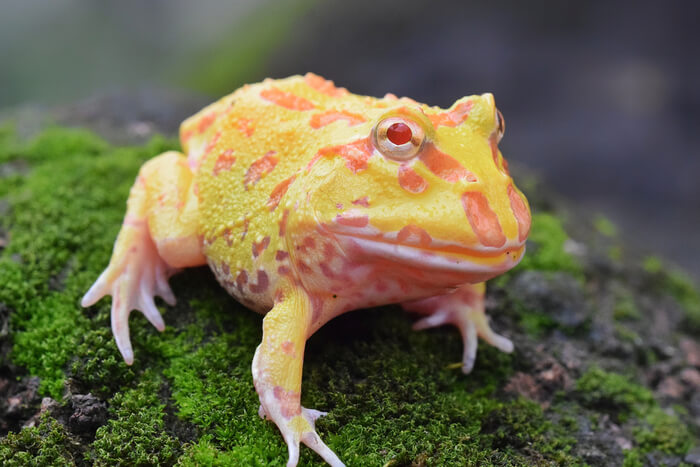
Substrates should always allow natural behaviors. For the bottom of the cage, it’s best to use 3-4 inches of sterile potting soil or coconut fiber to allow burrowing. Leaf litter or moss will allow better burrowing and help maintain humidity better.
Moss and leaf litter needs to be changed 1-2 times per week to avoid mold growth. Some people also use pebbles to help better drainage. If they’re used, the pebbles should be large enough to deter swallowing.
Plants should be provided to offer hiding areas an enrichment. Live plants are best for maintaining a healthy habitat, but if you’re not good at keeping plants alive, then you can use artificial plants. In addition to plants, wood tunnels can be offered for hides.
They should also be provided a water bowl for soaking. The frog should be able to fully submerge in the water. With amphibians, it’s important to use water that has been treated to remove chlorine, chloramine and other potential contaminants. Using reverse-osmosis water is another good option. Their skin absorbs toxins very easily, so untreated water can be very bad for them.
Temperature
Enclosures should have a temperature range between 70 and 85 F, with a gradient across the enclosure. Much higher than that temperature range can cause heat stress. A weak heat lamp or a heat pad on the bottom or side of the cage can provide the needed heat source. Make sure either is placed in a way that wouldn’t allow direct contact. If they get too close to the lamp or they get in direct contact with glass over the under-cage heater, then they can get severe burns.
Lighting
Provide a low-intensity UV light for 10-12 hours a day. Be aware that the UV spectrum wanes long before the light burns out, so it should be replaced every 6 months. Use lights with similar intensity to those for Leopard geckoes as described in our related article on choosing the best light for your leopard gecko. Hides on either end should be provided to let them escape the light when desired.
Humidity
The humidity needs in the enclosure are high. They require levels of 65-85%, verified by using a hygrometer. Most enclosures will require the use of a misting system to maintain this level of humidity. For more information on humidifiers, see our article on the best humidifiers for reptiles currently on the market. Alternatively, you can spray the enclosure 2-3 times per day as long as the humidity stays in the desired range. Again, use treated tap water or reverse osmosis water for the humidifier or spray bottle.
What Do Pacman Frogs Eat
Pacman frogs in the wild feed on insects and small vertebrate prey items.
They should not be provided foods designed for other animals.
Mealworms, crickets, earthworms, and waxworms are all good choices for insect food items. They should be fed good quality vegetables for several days prior to being offered. Additionally, they should be dusted with a calcium supplement (without D3) when fed to your pet. Insects and invertebrates have higher levels of phosphorus than they do calcium, and the dusting gets that back to a positive ratio for proper utilization of calcium.
Weekly, the calcium supplements are replaced by a multi-vitamin supplement (with D3). Young animals should be fed daily, but as the frog matures and growth slows, the insects should be offered 3-4 times per week.
In addition to the insects, you can feed feeder goldfish on occasion, or even small mice as a rare treat.
Temperament
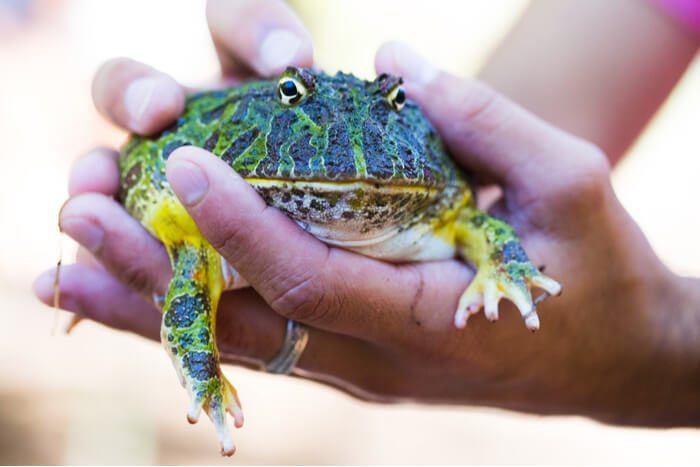
Pacman frogs don’t enjoy being handled and it will cause them stress. Their skin is very sensitive and permeable. Oils from your skin can damage them easily. Nicotine on a smoker’s hands, lotions, perfumes, and other substances are toxic and can cause serious health problems for frogs.
Health Concerns
All amphibians should be seen regularly by a veterinarian. The most common health concerns that you may see include:
- Nutritional deficiencies
- Fungal or bacterial skin infections
- Abscesses
- Parasites
- Chytrid fungus
- Sepsis (“red leg”)
It’s also good to get an annual health exam for your frogs. If you need to find an experienced reptile and amphibian veterinarian, start your search here.
Summary
Pacman frogs can be great pets for someone willing to make the commitment to the care they require. Just be aware that they can’t be handled much and they’re most active at night. They are beautiful and interesting frogs.
Frequently Asked Questions
Can you touch a Pacman frog?
It’s safe for you to touch them, but it’s not good for them. Their skin is very sensitive and easily harmed by the oils on our skin.
Is a Pacman frog a good pet?
They can be great pets as long as you’re not expecting them to be cuddly and interactive. They don’t do well when handled and they’re active at night.
Are Pacman frogs poisonous?
No, they aren’t toxic to humans.
Do Pacman frogs bite?
Despite the large mouth that makes them look like Pacman from the video game, they aren’t prone to bite people. They are ambush predators, so with a sudden movement, they may mistake movement for food, so approach slowly just to be safe. That’s also where they get the nickname “horse killer,” for biting horses’ lips when the horses are grazing.
How big do pacman frogs get
The average adult size of a Pacman frog is 4-6 inches, the female adult size is 4.5-8.5 inches.






